Butterley-Langley Mill Railway (1#3)
Butterley-Langley Mill Railway (1#3)
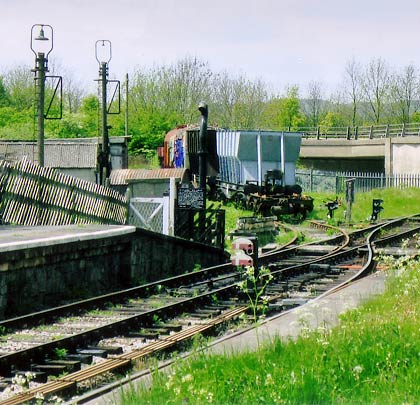
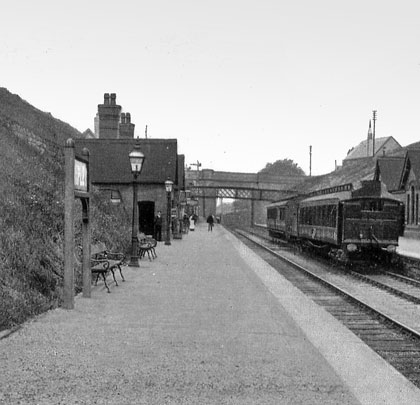
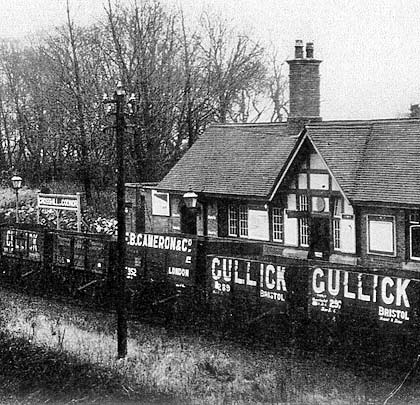
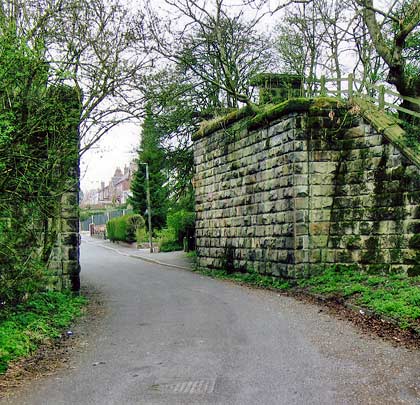
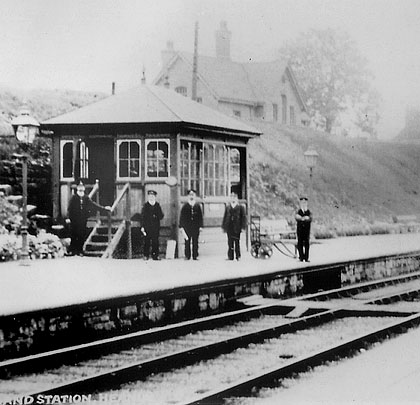
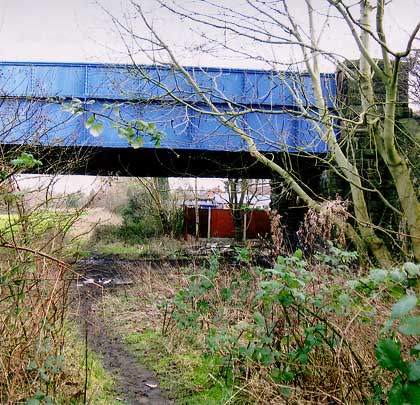
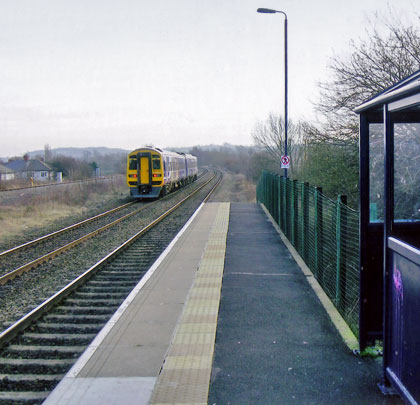







The Butterley to Langley Mill branch of the Midland Railway was not one of the most celebrated lines to be built by that company. Indeed, many people reading this article may never have heard of it. No more than six miles in length, it ran through the industrial heart of east Derbyshire.
Industry – in particular coal and iron working – was well established in the Ripley and Heanor areas by the 1870s but despite this there was no direct rail link between the two towns. As early as 1872, the Midland Railway had proposed to link Langley Mill with Ripley and Butterley by extending an existing branch which served Bailey Brook colliery. However, the Butterley Company, whose lines the proposed railway was to have run over, opposed the route. Again in 1876 a further scheme for a line over a less favourably graded route proved unsuccessful.
This may have been the end of the story had it not been for the Great Northern Railway’s incursion into the Erewash Valley. In 1876 the company had opened the first section of its Derbyshire extension lines, between Nottingham and Awsworth, with another branch heading northwards to Pinxton. By April 1878 they had opened in their entirety. The company’s route had been specifically chosen to serve as many of the Erewash Valley’s industries as possible and was estimated to earn over £50,000 per annum in revenue.
A proposal in 1882 for an independent line from Ilkeston to Alfreton via Heanor and Ripley and the subsequent surveying of a route from Ilkeston to Heanor by the GN probably convinced the Midland that it needed to be the first of the two companies to complete the link between Ripley and Heanor.
The Heanor area had been served by a growing network of mineral railways, owned by both the Midland and independent concerns, since about 1850. Despite this, little thought had been given to the provision of passenger facilities. The MR saw Langley Mill Station on the Erewash Valley line as providing adequate enough passenger facilities for the population of Heanor. In fact the station was known as ‘Langley Mill for Heanor’ from its opening in 1847 until it became ‘Langley Mill & Eastwood’ in November 1876. The change in name presumably occurred to distinguish the station from the similarly titled ‘Eastwood & Langley Mill’ on the Great Northern’s Pinxton branch.
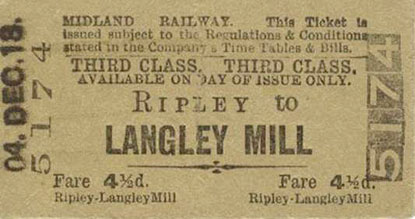
By the early years of the 1880s, the Midland Railway would have been acutely aware of the disastrous effects in failing to provide a direct link between Ripley and Heanor. When the GN arrived in the Erewash Valley a little under a decade earlier, it had been petitioned by the residents of Kimberley, over the border in Nottinghamshire, to provide them with access to the rail network. This was something that the Midland Railway had failed to do when expanding its local network. The Great Northern duly obliged and the station was opened in 1875/6 to goods and passengers respectively. The company continued to address the demands of the local population and a station at nearby Awsworth was opened in November 1880.
In an attempt to regain some of the passenger revenue lost to the Great Northern, the Midland began operating passenger trains along the previously freight only Bennerley Junction to Basford Junction line on 1st September 1882, as something of an after-thought. Passenger stations were opened at Kimberley – to compete directly with the Great Northern – and also at Watnall where there was no GN passenger service. The line was located in a railway backwater and took a meandering route into Nottingham. As a result, such services never seriously rivalled those of the Great Northern as they could not compete in terms of either speed or frequency. By January 1917 passenger services along the line had been abandoned – a casualty of the First World War – and were never reinstated after cessation of hostilities.
No doubt, the Midland was anxious not to be caught in the same predicament twice and in 1883 submitted an act for the construction of a line between Butterley and Ripley. The parliamentary sessions for 1884 record the granting of an Act for the section between Butterley and Ripley on 3rd July 1884. In 1886, further Acts were submitted which saw the section between Ripley and Heanor Goods Junction being authorised on 25th June 1886.
Despite the relatively short distance between Butterley and Heanor, the line was not opened to goods and passenger traffic until 2nd June 1890. This was probably due to at least two contributing factors. Firstly, the engineer employed to construct the line, one J P Edwards, had been granted another contract in December 1886 – this one for the construction of the 3¾-mile Nottingham Suburban Railway. Doubtless having two separate lines to build, both requiring significant engineering, would have slowed progress down. The second and probably more important factor was the relocation of the station at Ripley.
The Midland had entered Ripley in 1856 with a branch from the Derby to Sheffield line at Little Eaton, through the rural communities of Coxbench and Kilburn before serving the mining and pottery communities of Denby. The station at Ripley was located approximately a mile south-west of the town centre on Peasehill Road. The construction of the line from Butterley to Heanor caused the Midland to reconsider its provision of passenger facilities at Ripley, with a decision made to relocate the station at a site more central to the town, to the south of Nottingham Road where the line passed through a cutting. The new station was opened to goods and passenger traffic on 2nd September 1889 with the original station becoming a goods terminus from that date, serving this purpose until closure on 31st July 1954.
As has been previously mentioned, the line between Butterley and Heanor was opened on 2nd June 1890. In 1887, the Great Northern Railway had seen its own Act for a branch of 4¼ miles from Ilkeston to Heanor passed through parliament. This line penetrated the Nutbrook Valley and its rich mineral reserves, which had until this time been a stronghold of the Midland Railway. The Midland however would surely have been satisfied that they had reached Heanor first and would have used the time before the Great Northern arrived to consolidate its position within the town. The GN did not begin operating passenger trains to Heanor until 11th July 1891, some 13 months after the Midland, and it was a further six months before the terminus at Heanor was fully opened to handle goods traffic on 1st January 1892.
The route described: Butterley to Heanor
As many of the passenger services to operate along the branch either commenced or terminated at Butterley, the station here seems a fitting place at which to begin a description of the line. It was situated on the Midland Railway’s Crich Junction to Pye Bridge route which had been authorised under the Midland’s Duffield and Selston Acts of 1865, 1866 and 1869, and opened in three sections.
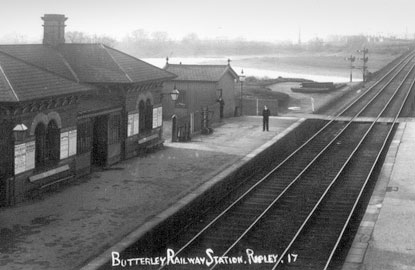
Photo: Kidderminster Railway Museum
On 1st June 1874, the western section had been opened to serve Swanwick colliery, with the eastern part serving Pentrich colliery opening on 29th July. The entire route was used by goods traffic from 1st February 1875; passenger services started three months later on 1st May. The line was constructed predominantly to tap into the rich mineral reserves in the area; passenger traffic being a secondary concern.
Butterley was its only intermediate station, located to the west of Derby Road where the road from Ripley to Swanwick crossed the line. Access drives from the west and east of the road led to the main station buildings and goods yard respectively. The station consisted of two platforms built opposite each other. The main buildings, situated on the Up platform and built of stone with tiled roofs, were quite elaborate in design with arched windows set into the stonework with decorative lintels and tall ribbed chimney stacks. Passengers wishing to cross between the platforms did so on a wooden board crossing situated at their western ends. The Down platform boasted a substantial waiting room beyond which sat a signal box which was identical in almost every respect to the one at Ais Gill on the Settle & Carlisle Railway.
Leaving Butterley Station, the line headed west, almost immediately crossing Butterley reservoir. This was the largest of three built by William Jessop between 1789 and 1794 to provide water to nearby Cromford Canal. Trains were carried over it on a 260-yard long timber trestle viaduct of 22 spans, each 30 feet in length, and restricted to a speed of 20mph. Between the first and second world wars, the London Midland & Scottish Railway replaced the structure with a stone embankment.
At its western end, Ripley and Heanor-bound services swung away to the south-east whilst the Ambergate line continued westwards towards Crich Junction. After passing over Asher Lane, the Heanor branch crossed the sidings of Pentrich colliery on an impressive 11-span cast iron-decked viaduct. The supporting piers were constructed of Bulwell stone whilst the deck sections themselves were manufactured by the Butterley Company.
A few hundred yards further along, the line passed over an accommodation track for the Cromford Canal – originally used by towing horses whilst their barges negotiated Butterley Tunnel – and the Butterley Company’s branch from Buckland Hollow Junction on the Ambergate-Pye Bridge line. This served the collieries at Lower and Upper Hartshay before continuing to Butterley ironworks, Brittain pit and Swanwick Junction. The arrangement here was quite unusual as the Butterley Company’s line crossed the Cromford Canal whilst another bridge took the Heanor branch over both the canal track and the mineral railway.
The line continued on an embankment before entering the cutting which would take it into Ripley. The railway passed beneath Pentrich Road, Butterley Hill and Outram Street before the cutting widened slightly to accommodate the goods facilities of the new Ripley Station. Whilst the original station there continued to handle a majority of the freight traffic generated, the Midland decided to provide the new station with a small goods shed and sidings for the storage of wagons.
Consisting on two platforms, this was located immediately south of Nottingham Road and was opened to both passenger and goods traffic from 2nd September 1889. The booking hall and office were located in a building which fronted onto Nottingham Road from where access to the Down platform was obtained. Both platforms possessed substantial brick-built waiting rooms whilst a signal box was situated on the Up platform. A cast iron lattice footbridge joined the two platforms near their northern ends. Due to its location in a cutting, the platforms had stone retaining walls to their rear.
The two tracks through the station reverted to a single line before passing beneath Albion Street. To Ripley Junction, the line encountered a falling gradient of between 1:50 and 1:200. This section was used by both Derby and Heanor-bound services. After passing beneath Park Road, the line emerged from the cutting where, to the east of the running line, the sidings to Ripley colliery came in.
The colliery, located further north, was owned and operated by the Butterley Company and served by its private rail network, with the branch leaving its main network at a junction just west of Brittain colliery. The line ran southwards, where a spur headed off to serve Fortyhouse pit. This spur was abandoned when the colliery ceased production sometime around 1890. Continuing southwards, the line eventually reached Ripley colliery, running on to join the Midland’s Derby-Ripley branch near to the old station.
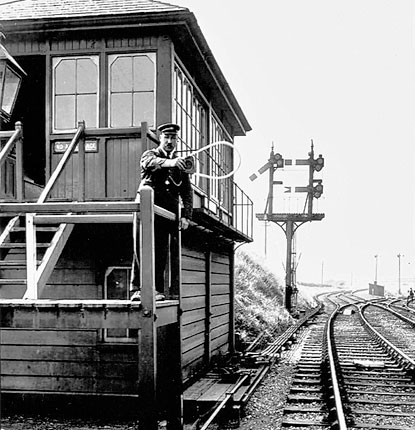
Photo: National Railway Museum
The line passed beneath Peasehill Road before reaching Ripley Junction where the line to Derby headed in a south-westerly direction. After a short distance the route from the old station joined this branch at Marehay Junction.
Meanwhile, the Heanor branch climbed eastwards on a gradient of 1:50 to pass over the line which ran into Ripley goods station on a 26ft-span stone arch bridge. Continuing on a rising gradient of 1:132, the line headed on its easterly course with the Butterley Company’s Waingroves colliery branch running parallel. This had left the Midland’s line just to the south of Ripley goods station on the spur from Marehay Junction. The line ran only as far as the colliery.
From Waingroves colliery the line began its descent towards Crosshill & Codnor Station, with the road to Waingroves Hall passing over the line on an imposing stone arch bridge. Now heading on a more southerly course, the line ran on an embankment – through which an occupation track from Codnor Denby Lane to Waingroves Road ran – to head through Strelley Wood to reach Heanor Road at Crosshill. When the line was being constructed it was necessary to realign Heanor Road to accommodate it. Before the arrival of the railway the road had climbed on a gradient of 1:13; this was reduced to 1 in 16 as a result of the realignment and construction of the railway bridge.
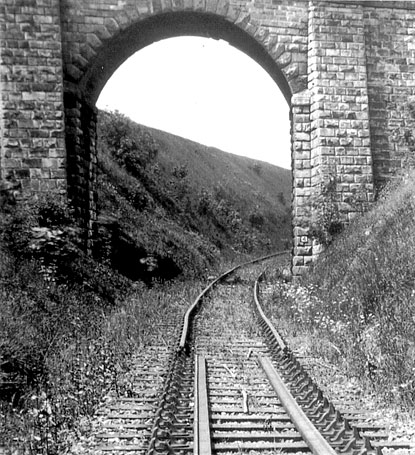
Photo: Mr B Key
Immediately east of Heanor Road was Crosshill & Codnor Station. Located just 1¼ miles from Ripley Junction, it was surprisingly built at a point where there was little local population and throughout its history there was always reliance for passenger traffic from areas of housing within walking distance of the station.
It was the only intermediate station between Ripley and Heanor and was opened to passenger and parcels traffic on 2nd June 1890. There were no goods facilities. The station consisted of a single platform which curved slightly at its eastern end and on which the station buildings were located. Crosshill & Codnor varied in design from Ripley and Heanor which were built to a standard Midland design of the period. Instead it was a red brick building with half timbering to the front elevation, giving a mock Tudor appearance, and with imposing gables and ribbed chimney stacks. This accommodated the booking office and hall, station masters office, general and ladies waiting rooms. A gentlemen’s urinal was located in a separate building attached to its end.
The station was lit by gas lamps on cast iron posts which ran the length of the platform with an additional lamp being fixed to the platform facing elevation of the main building. Access to the station was gleaned either from a flight of wooden steps from the Heanor Road overbridge or from a driveway which descended steeply from Heanor Road to a small forecourt; this extended to the front and side of the buildings. Beyond were extensive gardens. Photographs from the turn of the century show these were immaculately kept, as was the practice during that period.
When the station was opened in June 1890, there was a seven-levered signal box to control a loop to the east. Trains travelling from Heanor had to climb gradients of between 1:66 and 1:86, steepening to 1:50 beyond the station. These gradients meant that catchpoints were required to protect against runaway vehicles. The arrangement was quite unusual as the loop consisted of interlaced tracks. Because the Up track had sprung catchpoints, it meant that the loop was impossible for passing trains on. Partly for this reason the MR decided to dispense with the box and loop, both being taken out of use on 16th March 1896 and dismantled shortly afterwards.
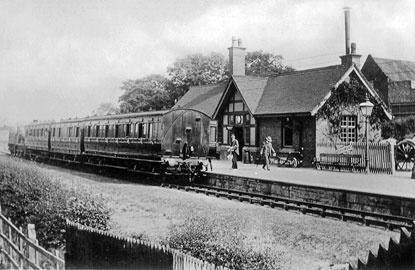
Photo: Kidderminster Railway Museum
Photographs of Crosshill & Codnor Station give the impression that it was located on a sleepy rural railway backwater, but this was certainly not the case. As the line headed southwards, it ran into the industries that had pushed their way westwards from the Erewash Valley.
The line crossed open agricultural land on an embankment, passing over numerous occupation and farm tracks on either stone arch or cast iron deck bridges. Still on an embankment, it then proceeded to run alongside the western bank of Loscoe Dam. All earlier proposed routes for a line between Butterley and Heanor had alignments running along the eastern side of the dam.
After passing the dam, the railway crossed Furnace Lane to head alongside the Butterley Company’s Ormonde colliery. This had opened in 1908 and rail access was from an extension of the Butterley Company’s branch that served Bailey Brook colliery and had opened as early as 1847, to the north of Heanor. A little further along, the short branch to Loscoe colliery passed beneath the railway travelling south-eastwards from its junction with the Ormonde colliery extension branch. Despite both pits being served by rail, neither had a physical connection with the Butterley-Heanor line.
The line then passed over Taylor Lane on a stone arch bridge to run through the Newlands area of Heanor, on a falling gradient of 1:200 to pass beneath Longbridge Lane and enter the cutting on the approach to Heanor Station. At Ripley the single track doubled to form a loop running into both platforms, with the sidings and line to the goods shed branching off from the main line. However, at Heanor the goods yard and track layout was slightly different. The single line doubled immediately after passing beneath Longbridge Lane, approximately quarter of a mile from the station, with the connections to the sidings and goods yard leaving the Up line and crossing the Down. One of the yard’s sidings was double ended, with one set of bufferstops located beyond the goods shed and another to the east of the Midland Road bridge.
Heanor Station was located immediately to the east of the Midland Road overbridge. Before the arrival of the railway, the road south of its junction with High Street was part of Falls Road. The coming of the railway saw its name change to Midland Road, with Falls Road commencing just beyond the station. The station was built to a standard MR design and was not dissimilar from that at Ripley. The brick-built booking hall and parcels office was located on a driveway just to the east of Midland Road. The driveway continued along the rear of the Up platform whilst passengers accessed the platforms via a wrought iron lattice footbridge which was connected to the driveway by flights of steps. Both platforms were provided with modest waiting rooms as well as toilet facilities. The platforms were lit by gas lamps on standard cast iron posts. The 22-lever signal box was also located on the Up platform.
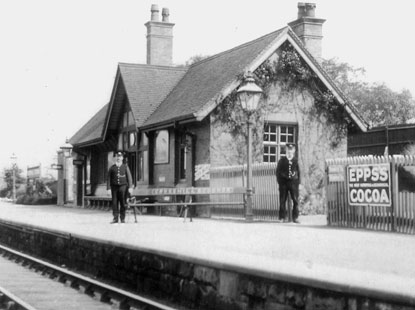
Photo: Kidderminster Railway Museum
All platforms at the branch’s stations were of a substantial length which would prove useful in the Edwardian period when regular excursion traffic used the line. Heanor Station was opened to both passenger and goods traffic from 2nd June 1890. The short section from the station to Heanor Goods Junction, where the Bailey Brook colliery line joined the branch, was opened to goods traffic only on 17th November 1890.
The Langley Mill extension
It was probably the opening of the Great Northern’s line from Ilkeston to Heanor that convinced the Midland of a need for a passenger connection south of Heanor. On 11th June 1891 the MR was granted powers to construct a branch of just 39 chains from Heanor Goods Junction to an independent platform to the south-west of Langley Mill & Eastwood Station on the Erewash Valley main line, although this did not afford direct access onto it. Services from Heanor could access the main line by taking the south-east curve at Langley Mill Curve Junction but would then have been unable to access the bay platform without reversing the train.
Just beyond the platforms at Heanor Station, the double track reverted to a single running line. An interesting feature here was the crossover built for Up trains. Ripley and Butterley-bound services would have approached the station on the Down side before crossing onto the Up and into the platform. The line from the Up platform continued beyond the crossover for a short distance before terminating at a set of bufferstops. Given that a loop would have been adequate, the reason for this arrangement is unclear.
From the station, the line travelled eastwards through the outskirts of Heanor – with Bailey Brook colliery visible to the north – before running beneath Mansfield Road on a cast iron deck bridge with stone parapets and piers. Between Mansfield Road and Heanor Goods Junction, the Bailey Brook branch gradually ran in from the north-west. Whilst the Butterley branch passed beneath Mansfield Road, the colliery line crossed the road on a level crossing. This was opened in 1847 and, from Heanor Goods Junction to a point approximately 200 yards north-west of Mansfield Road, was owned by the Midland Railway; the line beyond and the subsequent extensions to Loscoe and Ormonde pits came within the ownership of the Butterley Company.
Heanor Goods Junction, where the two lines met, was situated immediately to the west of Aldred’s Lane where a signal box was located. Like many others along the branch, the bridge there was a cast iron deck affair manufactured by the Butterley Company. From here to Langley Mill Curve Junction, both colliery and Butterley branch traffic would have used the same metals. Originally this short section of just six chains formed part of the colliery line, however after the commencement of passenger services from Butterley to Langley Mill it was absorbed into the latter route.
The line split again at Langley Mill Curve Junction, with one spur heading south-easterly to Heanor Junction thus affording a connection with the Erewash Valley line where there was another junction with a branch running to New Langley colliery. Trains from Butterley took the curve heading north-east, known as Langley Mill curve, into the bay platform. Access to the platform was from a footpath which ascended from Station Road, west of the bridge taking the Erewash Valley line over the road. The platform possessed its own waiting rooms and toilet facilities and was lit by gas lamps. A run-around loop was provided – mention is made of this as neither Ripley nor Langley Mill was provided with such a facility. This meant that trains from Butterley would have to run tender first before running around at Langley Mill to haul the train back locomotive first.
The distance between Heanor Goods Junction and the platform at Langley Mill was relatively short, however progress appears to have been slow and it was not until 1st October 1895 that services began operating along the entire route between Butterley and Langley Mill.
© Simon Swain 2011
 April 2011
April 2011




